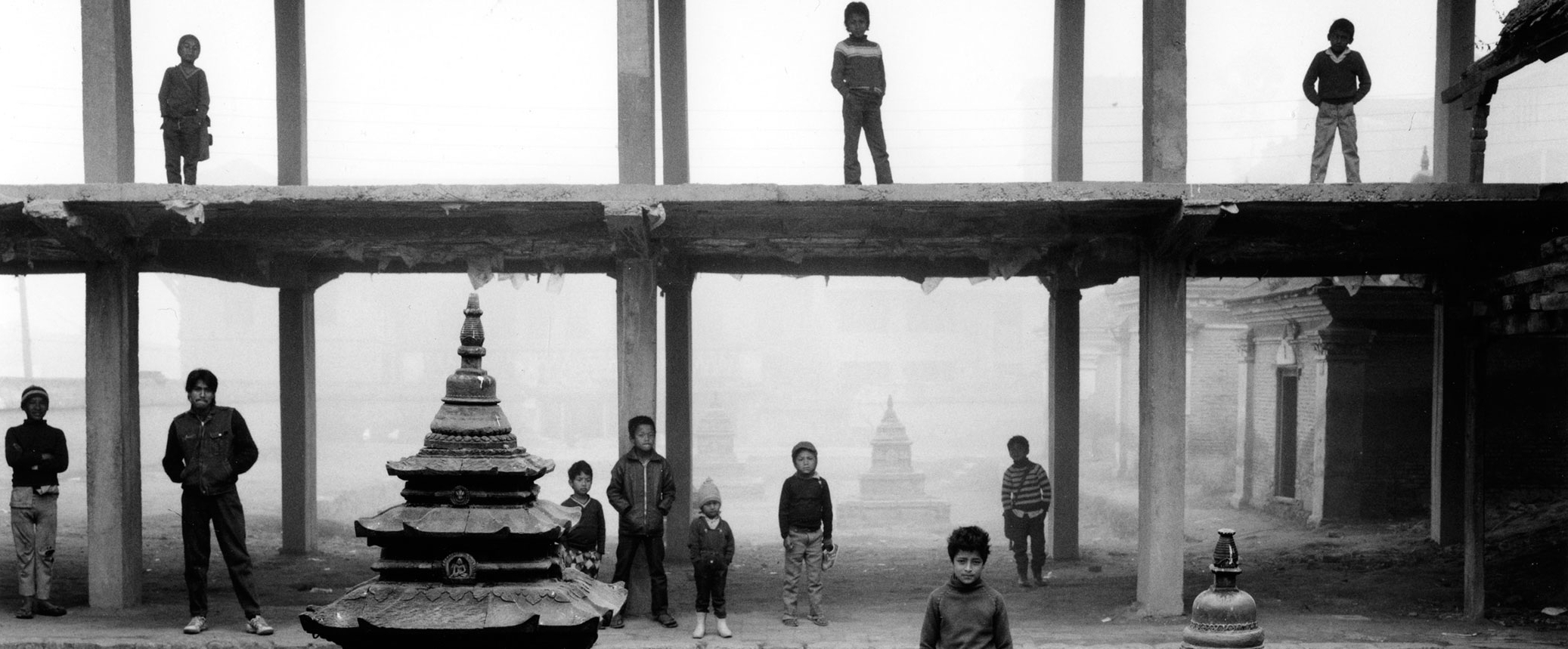
“The realization that not only my camera but also the modern world was making ever-increasing intrusions into even the most remote areas of Nepal compelled me to document a time and way of life slipping inexorably into the past.” — Kevin Bubriski 1993.
In 1975 Kevin Bubriski arrived in Nepal as a Peace Corps volunteer. For more than 4 years he worked on drinking-water supply pipelines in remote villages where few Westerners had ever been. For Bubriski, the commonplaces of modern life—cars, electricity, and plumbing—became faint memories of another time. He lived out of a backpack and spoke Nepalese comfortably; he also carried a 35mm camera. The rituals of the mountain village life and time with Nepalese families and friends were his daily reality. The black-and-white images he took there became Bubriski’s enduring bridge between the intimate village life and the mountain surroundings he encountered and the viewers of the photographs 30 years later.
In 1984 Bubriski returned to Nepal as a photographer. With a 4” x 5” view camera, a Nepalese photographic assistant, and two porters, he traveled the length and breadth of the country for the better part of three years. The static view camera set-up placed him in the midst of village life; however, viewing a scene or person from under the black cloth where the image would come into focus on the camera’s glass often left Bubriski feeling isolated from his subjects, in contrast to the casual directness of his earlier 35mm photography. Nevertheless, the photographic results of this view-camera procedure endure as a vibrant document of village faces and architecture.
This exhibition presents a small portion of the work that Kevin Bubriski produced over his 35 years of visits to Nepal. The strong idiom of the black-and-white photography in both the early and later images shows us the remotest mountain regions of Nepal and its people. These photographs are now historical documents, anchored in time, of a place that has gone through significant change. The renowned photographer Robert Frank once said that black-and-white was the color of photography; Bubriski’s prints in this exhibition, lent by and made by the photographer, are testament to this idea.
Send Your Comments
Comments are moderated, and will not appear on this site until the Rubin has approved them.

